True BRIGHT SIDER
Crows Aren’t Just Smart, They Are Scarily Smart
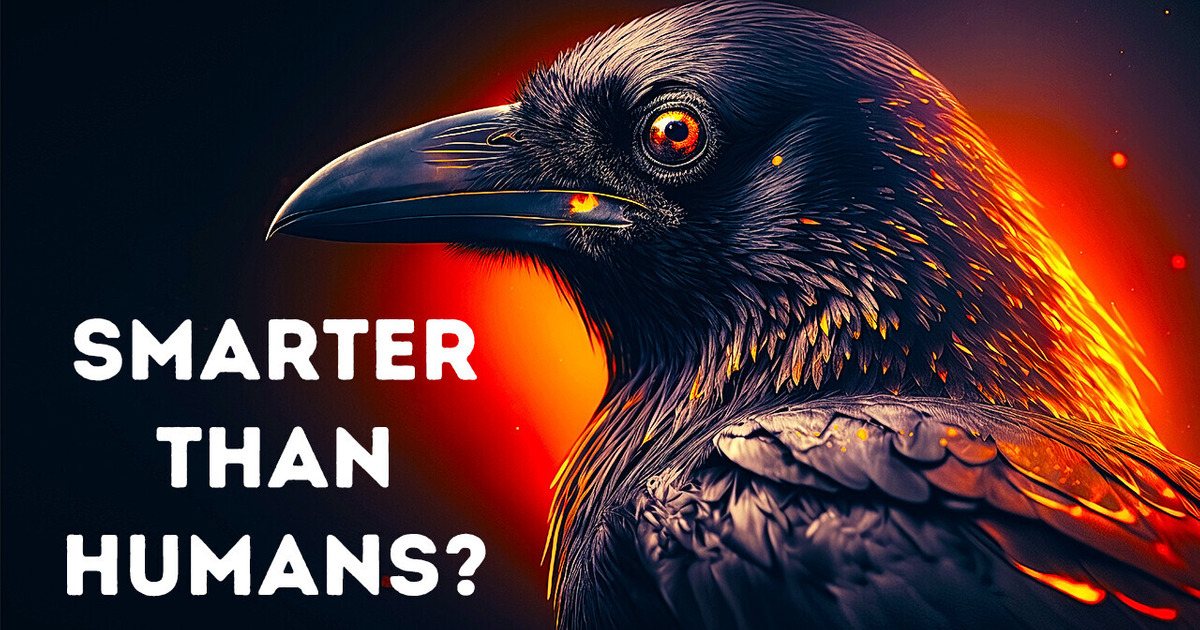
They might not seem to be the smartest creatures in the world, but some crows actually have brains bigger than yours. In proportion to the rest of their bodies, of course. The New Caledonian crow has a brain that makes up nearly 3% of its total body weight. The proportion is similar to that in dolphins and great apes. An adult human’s brain only weighs around 2% of its body weight.
Research has also shown that crows’ forebrains are more packed with neurons than those of primates. This area of the brain defines the intelligence of an animal. So, more neurons mean better cognitive reasoning. They could even be the smartest non-humans on the planet and smarter than 7-year-old humans!
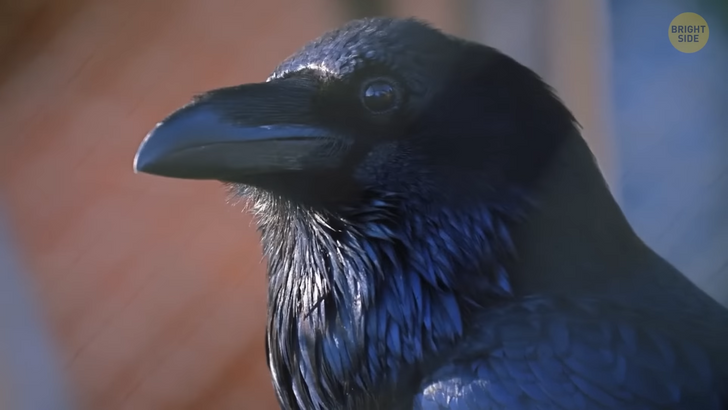
Scientists offered six wild crows a series of tests to see how well they understand causal relationships. The tests were based on Aesop’s fable, where a thirsty crow was dropping rocks to raise the water level in a pitcher. The real-life crows had to drop heavy objects into tubes filled with water. The birds were given a choice of objects to drop. They knew they had to choose solid and not hollow objects to drop, and a tube filled with water and not sand.
They also opted for the tube with a higher level of water, knowing that it would get them to the final goal with less work. All of the birds have successfully solved the puzzle, unlike little humans aged four to six and faster than 7-year-olds. Another experiment has proved that crows are capable of analogical thinking.
The smart birds were given a tray with three cups on it. The middle cup had a card on it with a color, a shape, or a number. The side cups also had images on top of them: one the same as on the middle cup and one different from it. There was food inside the cup with a matching picture. Crows quickly figured out how it all worked and started choosing matching cards to get the treat.
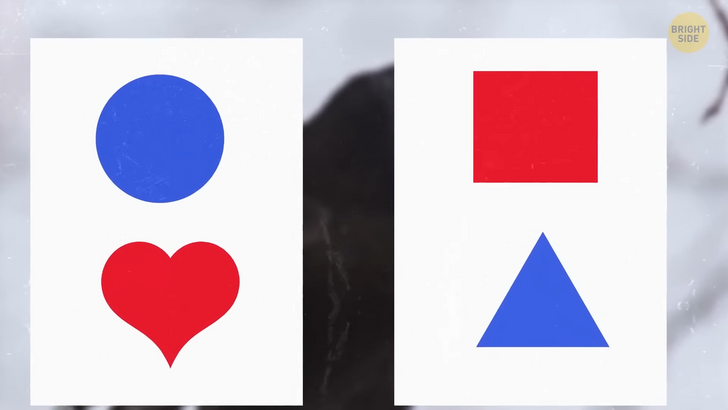
During the next round of the experiment, they got cards with pairs of items on them. There were pairs of identical items on two of the cards, let’s say, two circles and two triangles. The remaining two cards had diverse images: a circle and a heart and a square and a triangle. So, they had to find a match for a card with two identical items and two different items. The birds instantly figured out the task and picked the right cards each time.
Crows thrive on every continent except Antarctica and South America. Crows and their close relatives — ravens, magpies, and jays — have learned not only to survive among humans but to make use of this neighborship. Crows who live in cities in America and Japan, for example, have learned to drop tough nuts onto streets with heavy traffic and wait for the vehicles to crush the nuts for them. Then, the birds wait for traffic lights to go green for pedestrians and safely pick up the treats from the ground.
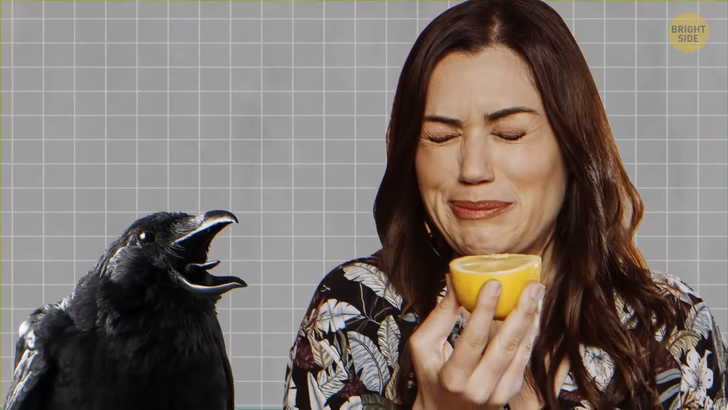
They can also somehow tell if a human presents a direct threat to them or is just minding their own business. Crows take off much sooner when they notice a person moving their way and staring at them.
Most birds and other animals prefer to run away when humans are approaching, even when they’re just strolling by. Crows feel when it’s okay to stay relaxed and when they must escape danger.
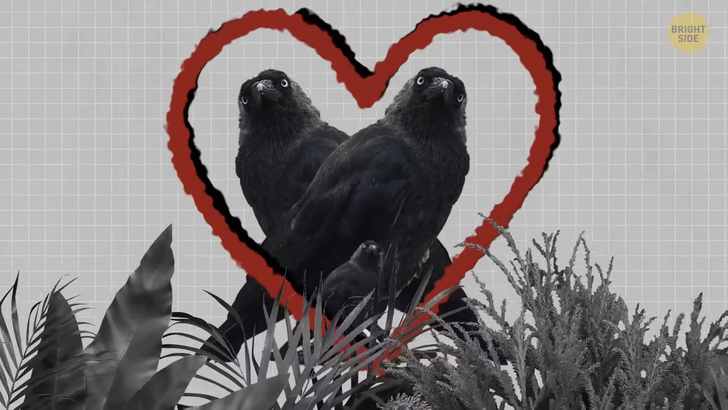
Family means a lot to crows. They normally find one partner for life and live in pairs or small family groups. In the cold wintertime, they join hundreds and even thousands of their peers to survive the nights in a unit called a roost. During the nesting season, young crows help their parents defend the nest from any intruders. They can also bring food to their parents or directly to their youngest siblings. Some birds keep helping their parents for several years.
Crows also make friends for life and form huge gangs to protect themselves from predators. They swoop in to harass any unwanted aggressive guests and go even after larger birds like owls or hawks, or other animals. Sometimes they also get together to steal food from larger creatures. Some members of the group distract the predator’s attention while others do the sneaky business.
It all sounds like “caw, caw” to you, but crows have a whole variety of sounds, and each of them means something to others of their kind. They can warn prospective intruders that they’re about to enter their territory or let their relatives know their location. That language isn’t universal — it varies from valley to valley, pretty much like regional dialects. If a crow decides to join a new flock for some reason, it will have to learn to caw their language by mimicking the sounds of other members of the new flock.
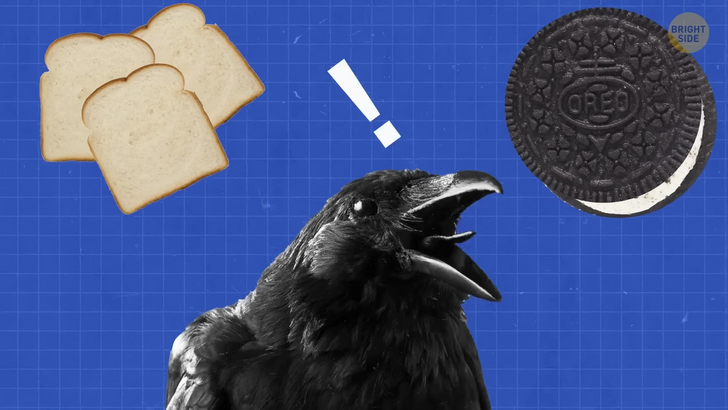
Crows have more self-control than many people. If someone offered you a treat you could get right now and another, more delicious one you’d have to wait for, what would you choose? The smartypants with feathers have proved they know that waiting a bit pays off.
Researchers first tested the crows’ dietary preferences: bread, grapes, sausage, fried pork fat, and other treats — each of the birds had their favorites. Then, they offered them their least favorite food. After a few seconds to ten minutes, the researchers offered the birdies a more delicious treat or a bigger portion of the same snack.
They had the option to grab whatever they got and fly, but that would mean no hope of getting a better treat. The participating crows chose to wait only for a higher-quality snack they’d enjoy more. They didn’t want to wait to get the second portion of the same snack. Only when they got the desired food would the participants leave the testing grounds. Other birds, like pigeons, chickens, and gray parrots, didn’t show that kind of patience and self-control during the same experiment.
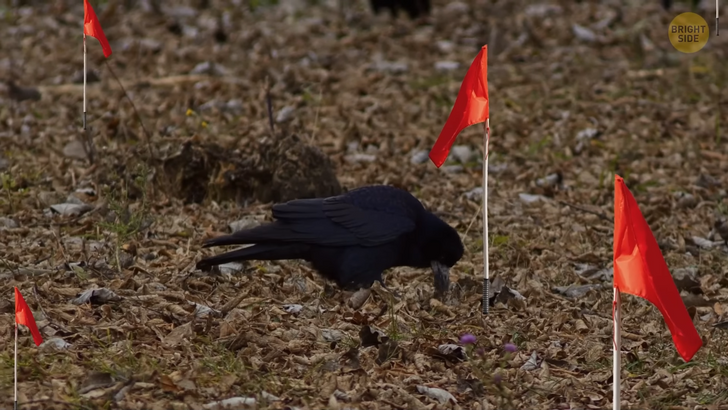
Our heroes of the day never waste food. When they have too much of it, they hide it in caches for later in some secret spots or in leaves and other objects. Once they feel hungry again, they know exactly where to go to find their supplies. Sometimes they also add some markers on top of the cache to remember where it was or move food from spot to spot to protect it from some other hungry mouths.
They also know which food goes bad first and finish meat before other types of meals, like nuts or bread, that stay good for longer. Crows also craft and use their own tools. They have learned to carve thin strips of wood in skewers and bend wires into hooks to pick up food that is out of reach. They remember the design and recreate the same kind of tool.
Crows also know how to combine materials that wouldn’t work separately to build one complex tool. Only humans and great apes were known to do something like that before. It also looks like crows enjoy the process of making and using a tool. Their behavior changes after successfully using a tool, just like we, humans, feel happy after finishing a complicated work assignment.
Comments
My city neighborhood has crows flying around occasionally. Where is the best place to find them? Do they stay in one area more than another? We would like to leave food out for them..what will attract them? We leave seeds and bread for the sparrows, but the krackles, pigeons and sometimes gulls will take over. Any info would be appreciated..thanks!
Related Reads
What to Do If Your Pet Is Choking

I Refuse to Do My Coworker’s Job for Free—So I Made Him Pay

I Refused to Help My Pregnant DIL—I’m Retired, Not a Free Babysitter

15 Stories That Show Kindness Is the Quiet Power the World Often Forgets

10 Real Moments That Hit Harder Than Any Movie Scene

13 Stories Proving That Female Solidarity Turns Ordinary Women Into Legends
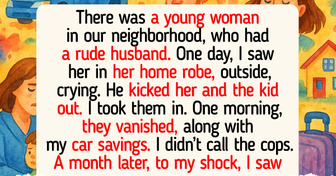
My Parents Gave My Brother the House They Promised Me—And They Learned Their Lesson

I Knew My Son Was Ashamed of My Job—but His Next Move Hurt Me Deeply

10 Moments That Proved the Worst Betrayal Comes From Home

15 Stories That Prove a Small Spark of Kindness Can Light Up a Fading Soul

I Refuse to Help My Homeless Mom After She Spent All Her Retirement Money on My Sister
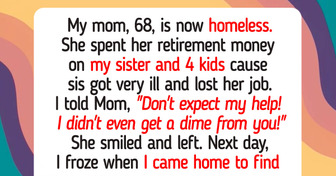
18 Stories That Prove a Cleaner’s Job Is About More Than Just Dusting
